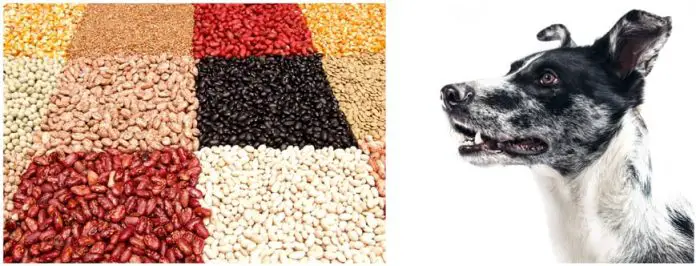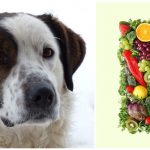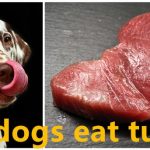Beans come in different shapes and sizes and all of them are loaded with vitamins and minerals. However, not all beans are as beneficial to dogs as they are to humans.
If you are planning to include beans in your pet’s usual diet, make sure you already know which ones are safe and which ones are off-limits. Take a look at our list below to see if a certain bean will be safe for your dog or not.
What Are the Dog-Friendly Beans?
These dogs are safe for dogs, but you still have to be mindful of the quantities you are serving your dog. Consider these beans as treats that you can serve to your pup once in a while:
Kidney beans
They boast a creamy texture and a slightly sweet taste. These beans are ideal for making Crockpot dog food. They are best paired with brown rice, although you can also throw some carrots, peas, butternut squash, and ground beef into the mix.
Kidney beans lower the risks of heart attacks, they are full of iron, and they can reduce cholesterol. If you are looking for a high-fiber food for your pet, you cannot go wrong with kidney beans.
Black beans
They were dubbed as the healthiest of all beans because they contain a significantly higher amount of nutrients than the other types. They contain more folate, magnesium, protein, and fiber than any other type of bean.
These beans can be used as a substitute for meat in making a homemade burger for your pet. This is because they have a dense and rich flavor. Black beans are also a great addition to a bowl of rice, sweet potato, and kale.
Pinto beans
These tasty beans are best combined with meat and rice. They boast vitamins and minerals, which make them a healthy addition to your dog’s diet.
Pinto beans can boost Fido’s energy levels. What’s great with pinto beans is that they are an immune booster. One of the surprising benefits of pinto beans is they can improve memory.
Soybeans
They are a common ingredient of dog food products because they are a cheaper source of protein compared to meat. There is really nothing wrong in giving soybeans to dogs as long as you keep it at a minimum.
There is an ongoing debate on whether dogs could have soybeans or not. This is due to the circulating information that dogs cannot digest them well. The truth is that they can easily break them down and their capability to digest these beans will depend on how much you fed them.
Garbanzo beans
Also known as chickpeas, garbanzo beans are actually a popular ingredient in homemade dog food. When turned into flour, they can also be used in making baked treats for canines. They are an excellent source of fiber and protein.
Garbanzo beans support a healthy gut because they are an excellent source of fiber. The antioxidants in these beans are useful for preventing free radical damage in your dog’s body.
Chickpeas can be a wholesome addition to a diabetic dog’s diet as they reduce cholesterol and help regulate blood sugar levels. On top of that, they contain nutrients that support heart health.
Green Beans
Green beans, also referred to as string beans, are considered as a wholesome addition to any dog’s diet. Like the rest of the beans on the list, they are packed with essential vitamins and minerals to help keep Fido healthier.
Did you know that green beans are also prescribed by vets for dogs suffering from obesity? The “green bean diet” has been gaining lots of attention because a lot of dogs find it difficult to shed the extra weight.
If you want to know more about this kind of diet, it’s best to consult your vet first. You should not try it for your dog without getting the consent of your veterinarian. Your doctor will have to check first what causes sudden weight gain.
It will be too risky to try the “green bean diet” with the information you obtained from the Internet. Supervision from an expert is the key to making this diet successful. Also note that there is only a certain percentage of beans that you are allowed to feed your dog during this type of diet.
Meanwhile, green beans are the only type of beans that you can offer to dogs raw. As long as they are plain, you will surely not encounter any problem in sharing them with Fido. Never put any salt, pepper, and herbs when preparing green beans for your pet.
What Are the Beans to Avoid?
There are types of beans that are not so friendly to canines. Take a look at this list to know which ones to avoid when shopping for beans at the grocery store:
Raw beans
All types of beans, except for green beans, should be cooked before serving to your pet. Some types of beans can be too sturdy so you should really cook them well to make them more digestible for your pet.
More importantly, raw beans contain toxic substances that can kill dogs. Make sure kidney beans were soaked and cooked thoroughly before giving them to dogs.
If you don’t have a lot of prep time for soaking, you can try the quick-soak but you have to boil them first for a few minutes before proceeding. When it comes to cooking, you have to let them boil and simmer for roughly an hour.
Chili beans
These are the kinds of beans often used in making salsa. These beans are usually sold in cans with a chilly style sauce. They are not suitable for dogs because they are too spicy.
Some dogs are able to tolerate spicy foods but this is rare. Dogs should not be given anything spicy. They could snack on bell peppers but not the chili ones and obviously not chili beans.
Dogs are not supposed to eat spicy food because it irritates their stomach lining. This leads to bloating, gas, and diarrhea. If your pet accidentally ate chili beans, it’s best to call your vet for assistance.
Canned beans
Canned beans are quick and easy to prepare but they are not the best choice for your pet. First, they don’t taste as rich as the dried beans. They don’t give out a natural flavor and texture.
These types of beans are subject to high amounts of preservatives. The additives in canned beans can cause weight gain in dogs. Worse, the sodium in canned beans could trigger serious health problems.
A brand of canned beans has as much as 500 milligrams of sodium for a half a cup of serving. Even if you soak the canned beans, there will still be around 70% of the added sodium left.
Besides the sodium content, the can used in storing the beans may be exposed to chemicals. This is the reason why many pet safety advocates go against giving canned foods to canines.
It will be healthier and more convenient to buy dried beans. They are also more economical than the beans sold in a can. You could save even more money by purchasing them in bulk as they can be stored for a long time.
Baked beans
Like canned beans, baked beans are subject to high amounts of sodium. Not only that, but baked beans are loaded with sugar or molasses. Most of the ready-to-eat baked beans also have fatty meats like bacon and hotdog that are as bad for dogs as they are for humans.
Baked beans might be your family’s favorite. If you always have baked beans at home, just keep them for your own consumption. Your pet could get along just fine without them in his diet.
Baked beans are gas-inducing like other types of dried beans. They contain raffinose that can only be reduced when the beans are soaked and the broth removed. You can try that but still, baked beans are not recommended for dogs.
Coffee beans
Dogs are sensitive to the effects of caffeine in their body. Unlike humans, they cannot tolerate caffeine very well. Ingesting coffee and other by-products puts them at risk for caffeine poisoning.
Caffeine poisoning is a serious issue that should be treated as soon as possible. It can cause hyperactivity, vomiting, and restlessness. It usually takes effect an hour or two after the time of ingestion.
Avoid exposing dogs to coffee beans, grounds, and even used tea bags. If your pet accidentally consumed coffee, call an animal poison control center immediately. It will also help to call your vet if the symptoms persist for more than 24 hours.
What You Need to Know About Feeding Your Dog Beans
There are pros and cons in giving beans to your pet that you have to outweigh first before incorporating beans in your fur baby’s diet. It’s important to do so, especially if your pet is not really used to eating beans.
The biggest advantage of giving beans is that they provide your pet with a healthy source of protein. Beans are a viable source of protein, in case you want to incorporate this nutrient from other sources than meat products.
It may be ideal to offer beans every now and then if your dog is sensitive to high-quality meats like chicken and beef. Beans are also more economical compared to these meat products.
The most popular disadvantage, on the other hand, is their gassy effect. Beans make your dog fart because they contain an indigestible type of carbohydrates.
If your pet experiences real discomfort or intestinal gas after eating beans, refrain from feeding them again. It’s a good idea to administer antacids to dogs, as long as you are giving accurate dosage.
Tips in Buying Beans for Your Dog
Regardless of the type of beans you are planning to use, it’s better to select the dried kinds instead of the canned ones. Why choose dried beans for your dog?
First, they are more affordable than canned beans. A can of beans is twice more expensive than a bag of dried beans. You could even save more when you buy the dried ones in large quantities.
Second, dried beans taste better than the canned ones. The dried beans have a richer and more complex flavor than the ones you get from a can.
Third, giving dried beans to your dog is a healthier choice. You can be sure that the food is free from any preservatives.
The only drawback with dried beans is that they can take hours to cook. In terms of nutrition, dried beans and canned beans share the same profile. Still, there are issues regarding the nutrients of canned beans.
They are said to have lower amounts of nutrients, such as protein because of the manufacturing process. The sodium content of the latter is also significantly higher.
Another con of buying beans in a can is their possible exposure to BPA. Unfortunately, not all companies use BPA-free cans for their products. Obviously, a product will likely have more chemical contaminants when it has been heavily processed.
But when you really don’t have a lot of time for soaking and cooking dried beans, you may use the canned beans, just make sure you drain and rinse them first.
Removing the beans’ broth will somehow reduce their sodium content by roughly 30%. It’s a must to rinse the beans first before cooking them and adding them to your dog’s meals.
The Bottom Line
There is nothing wrong in serving beans to your dog. As long as you know which ones to avoid, you can definitely give it a go. Most importantly, remember that a dog’s digestive system is different from ours. They thrive in a high-protein and low-carbohydrate diet, which means you can only offer a small amount of beans once in a while.























